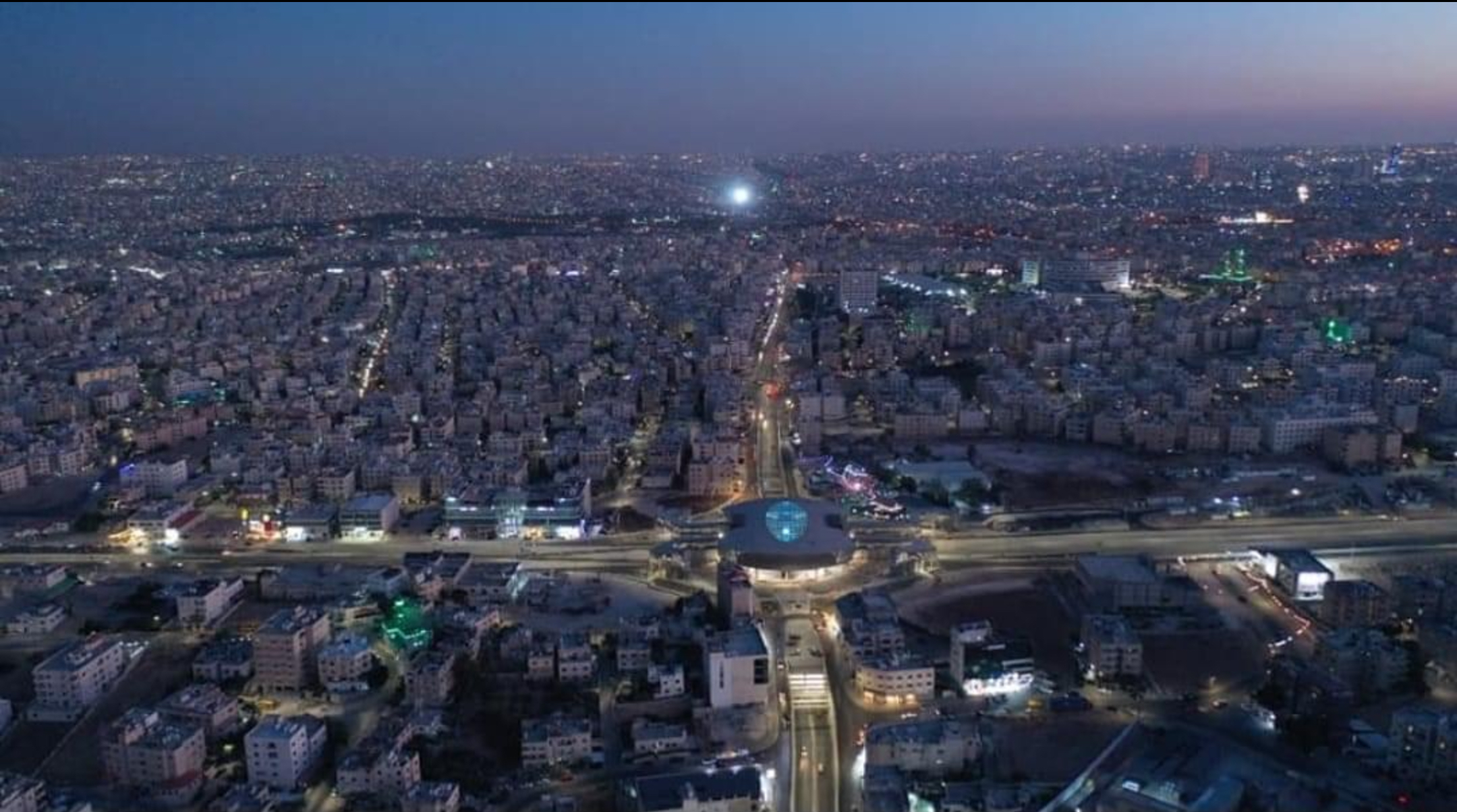
It is distinguished by being the headquarters of the General Command of the Jordanian Armed Forces, which includes the office of His Majesty King Abdullah II, the Supreme Commander of the Armed Forces.
For more than twenty years, Tabarbour has been growing economically, residentially, and commercially, attributed to its location connecting the governorates of Amman and Zarqa. Zarqa borders it to the east, Jabal Al-Jubeiha to the west, which serves as an entrance to the Northern Tla' Al-Ali area. It is bordered to the north by the Shafa Badran area and to the south by Basman area. According to the administrative organization of Amman city, Tabarbour is one of the neighborhoods of the Tareq district.
Tabarbour is a compound word consisting of two parts: "Tabar," which means a small axe, and "Bour," which means rocky land unsuitable for agriculture. Hence the name Tabarbour. According to ancient narratives, the Ottomans found Tabarbour a safe place to bury their treasures due to its rocky nature. Thus, Tabarbour joins the list of Amman's regions named after their natural characteristics, such as Al-Rabiah area.
While our discussion about Dabouq highlighted the Husseiniah Palace as the residential headquarters of His Majesty King Abdullah II, Tabarbour hosts the office of the Supreme Commander of the Armed Forces, His Majesty King Abdullah II, located in the headquarters of the General Command of the Jordanian Armed Forces. However, residing in Tabarbour does not require obtaining security clearance as in Dabouq.
Tabarbour also hosts important governmental institutions such as:
- Military Sports Union
- Armed Forces Hotel
- Camp for the Jordanian Special Forces
- Arab Army Camp
- Gendarmerie Forces Camp
Moreover, one of Jordan's most important universities, the Islamic Sciences University, is located in Tabarbour.
Tabarbour's history dates back to the second century AD in the Roman era, where one of the most important Roman shrines was found, the shrine of Nejais belonging to a Roman family, with an area of 12 square meters. Over time, the place was renovated by establishing the Nejais Park, which includes entertainment facilities and restaurants, becoming a destination for the locals and visitors. Particularly noteworthy is the preservation of the architecture of the Nejais shrine to serve as a witness to the history of the Tabarbour region.
Tabarbour's location and the presence of important government headquarters have been key factors in its selection by people for residence, especially since its residential prosperity began with the original inhabitants who are attributed to the Dajah tribes. Hence, Tabarbour witnessed a significant residential and commercial real estate boom. Today, Tabarbour is a densely populated area with congestion on its main streets and commercial markets. It is the preferred location for many people seeking a residential area with abundant basic services such as private and government schools, medical services, sports clubs, markets of various kinds, transportation, yet with relatively good property prices.
Homes Jordan is specialized in real estate affairs and holds the largest real estate list in Jordan, continuously updating it to suit all people's requirements in different areas of Amman. It is worth mentioning that property prices in Amman vary based on various factors such as location, area, services, infrastructure, and others. There is a clear difference in property prices between West Amman and East Amman, with property prices in West Amman being higher than those in East Amman. As for Tabarbour, searching for an apartment for sale or rent in Tabarbour is what people mostly desire in the East Amman area, especially after the opening of the Tareq - Bus Rapid Transit station at its southern entrance.
We cannot talk about Tabarbour without mentioning the Bus Rapid Transit station located at a very important intersection along Shuhada Street, which connects Ain Ghazal neighborhood leading to the Zarqa Highway and Western Amman. This station is one of the high-frequency bus stations in Amman, one of the most important achievements of the Greater Amman Municipality that previously completed the Abdoun Bridge. This project contributed to a qualitative leap in transportation within Amman and facilitated people's movement between Amman's areas. In addition, many engineers described the design of the Tabarbour station as a distinctive architectural masterpiece and considered it the most beautiful station among the bus rapid transit stations in Arab countries.
Tabarbour is a neighborhood within the Tareq district, which also includes the following neighborhoods:
- Ain Rabaat
- South Martyr
- Abu Aliya
- Al Khazneh
- Al Faisal
- Ain Ghazal
- Prince Hussein Bin Abdullah
- North Martyr
- Al Khazneh
- Al Ghabe
- Tareq Street
- Tabarbour Street
- Prince Hussein Street
- Martyr Street
- Mohammed Al-Abdallat Street
- Ibn Am Maktoom Street
- Ibn Maja Street
- Al Azhar Street
- Birin Street
At Homes Jordan, we realize that Amman is an exceptional capital, with a unique mix of diversity, houses witnessing great ancient civilizations among its mountains, and neighborhoods with a developed lifestyle providing all the amenities and services.
All rights reserved for Homes Jordan 2024
The article was written based on the following sources:
https://areq.net/m/طبربور.html
https://ar.wikipedia.org/wiki/طبربور